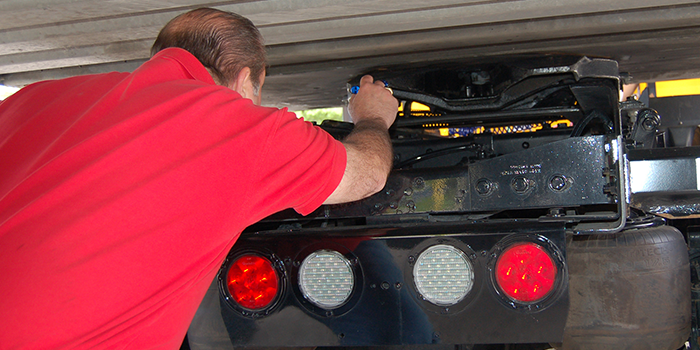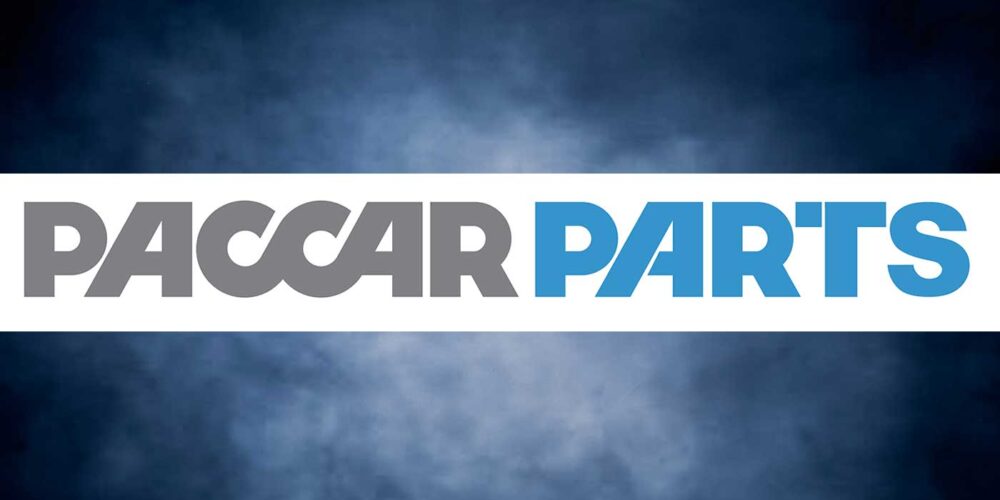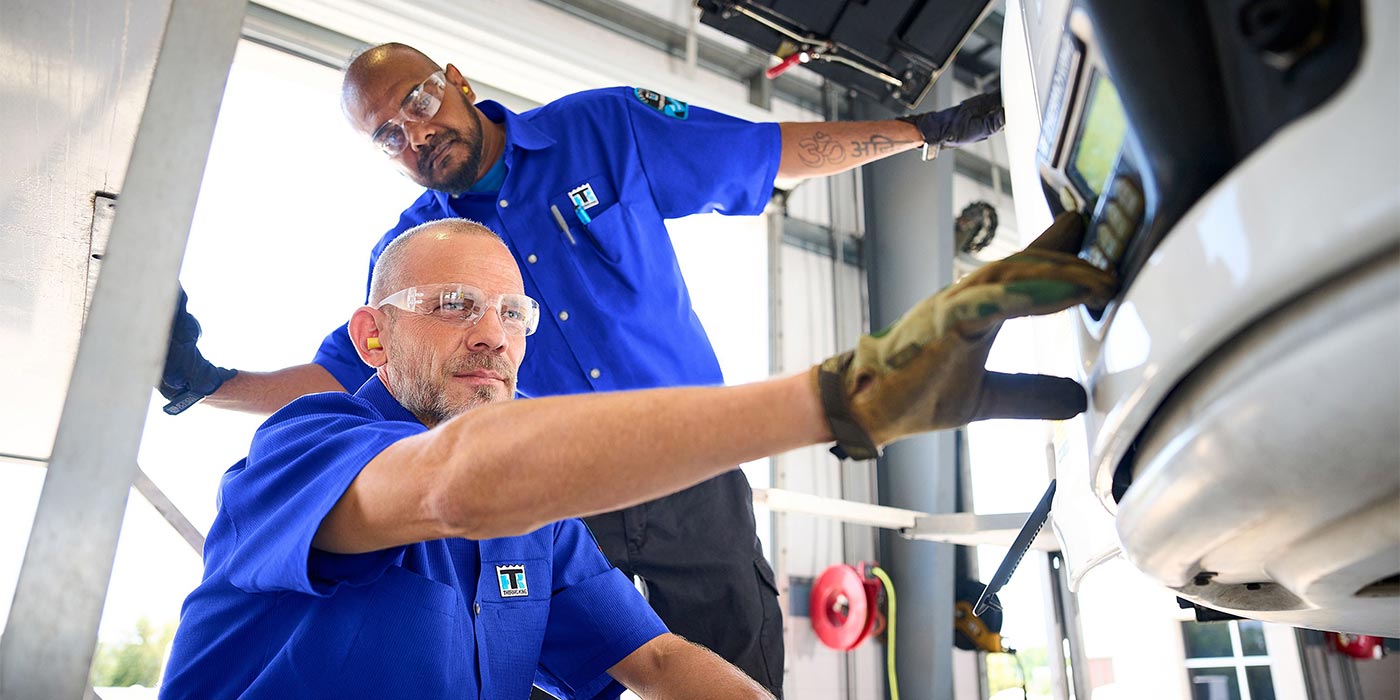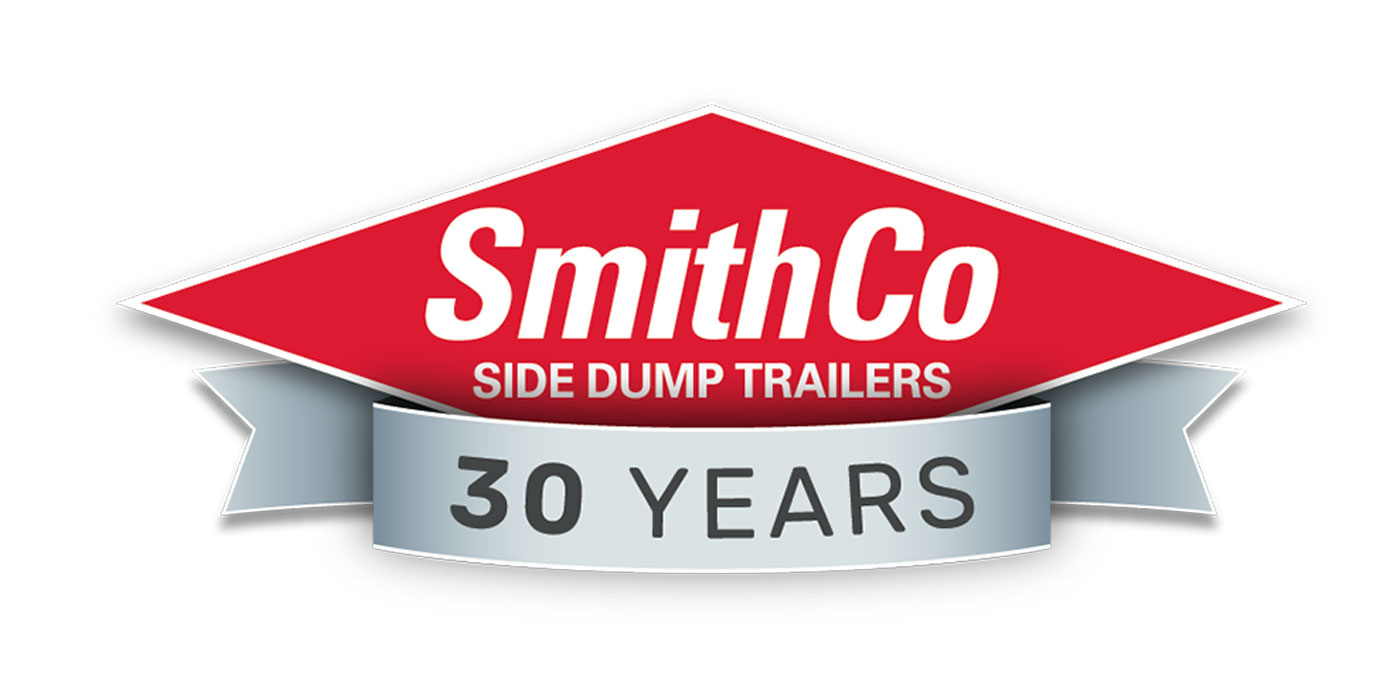To activate the lock, Puckett recommends that the test kingpin be inserted into the throat of the fifth wheel until the locking mechanism is activated. Next, check the fifth wheel’s adjustment. “Once the technician verifies that the fifth wheel is functioning properly, move forward with the greasing process,” he adds. “In order to ensure the correct amount of grease is applied, the fifth wheel should be degreased before new grease is added. Layers of old, hardened grease left in place under new grease can cause locking issues, especially during winter months.”
Another key inspection item is the upper coupler. “An upper coupler that is out of compliance can also cause issues with the operation of the fifth wheel,” Puckett states. “Fontaine always recommends an inspection of the trailer plate and kingpin at the same time an overall inspection of the fifth wheel is performed. For more information on upper coupler inspection, follow Technology and Maintenance Council (TMC) Recommended Practice 750—Upper Coupler Inspection Guidelines.
“It is always the driver’s responsibility to make sure the fifth wheel properly connects to the trailer,” Puckett concludes, “and trucking companies should ensure all drivers are trained to follow proper fifth wheel coupling procedures for the model used on each of the trucks that they will be operating.”
Greasing fifth wheels
“Fifth wheels are typically one of the components on Class 7 and 8 tractors with the greatest exposure to the elements,” says Leonard J. Badal Jr., commercial sector manager at Chevron. “Specifying the right grease, ensuring the correct fifth wheel grease application, and maintaining an appropriate fifth wheel inspection and maintenance program are the keys to reliable service life.”
Chevron’s recommendation, according to Badal, is to choose a grease with not only the right properties for protecting fifth wheels—as well as trailer kingpins where metal-to-metal contact can cause adhesive wear—but also one that also satisfies a range of truck lubrication needs. This is important, he notes, to simplify the number of greases at shops and ensure correct grease application.
“Depending on the oil drain interval for the truck,” Badal says, “our general recommendation is to lubricate fifth wheels at every oil change with a premium extended service grease. An important part of this recommendation is that the grease also cover all the lubrication points on a truck chassis, including U-joints, front end king pins, steering tie rod joints, and front wheel bearings. A single product that can be used on the whole truck is convenient, reduces inventory needs, and eliminates the possibility that the incorrect grease will inadvertently be used.”
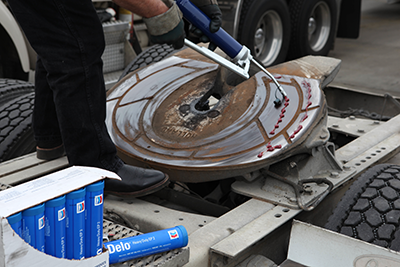
Delo Grease ESI has been bench and field tested in varying operating and weather conditions. One of the bench tests was a water spray-off protection (Water Spray Off—ASTM D4049) evaluation that measured the tendency of the grease to adhere to a metal surface when subjected to water spray at 40 PSI and 100°F. Another was a wear protection performance test (Load Wear Index—ASTM D2596) that measured the ability of the grease to prevent wear at a specified loads, along with shock loading impacts that fifth wheels experience in real world applications.
The real test of the grease came in 2009, Badal relates, when Chevron field-tested it with a U.S. fleet that had over 5,000 trucks and 600 maintenance facilities. Their trucks experienced every type of operating condition that grease faces, including extreme high and low temperatures, heavy loads, water and salt spray conditions and extended grease intervals.
After two years of testing, the results were compiled and Delo Grease ESI performed extremely well, Badal reports, allowing fleet customers to use Delo Grease ESI without having to maintain multiple greases or change between summer and winter grades.
For more information, visit www.ChevronDelo.com.
(Click“Next page” to continue reading the story.)

